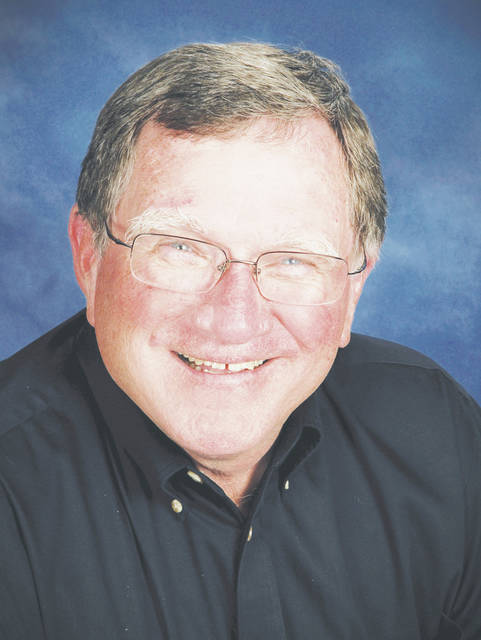
We have come quite a distance since the old horse-and-buggy days — but not quite far enough.
Last year, as Debbie and I drove across the barren deserts of northern Nevada, it was astounding to think that, just a few generations earlier, pioneers had made the same journey in covered wagons, on horse-back and on foot.
Debbie and I cruised along in our comfy little Buick. The dry, arid, 120-degree temperature stayed on one side of the windshield while the comfortable air-conditioned breeze from the car A/C wafted over us inside the car.
We had fun cruising along the interstate while listening to satellite radio and chatting about the barren, yet beautiful landscapes that surrounded us.
At one of our stops, I saw a historical marker that pointed out that in 1847 the Donner Party had traversed the same trail we were driving.
What a difference 171 years can make.
We arrived in the Lake Tahoe area ready to have fun and continue our vacation. The Donner Party was caught in a mountain pass just north of Lake Tahoe. Their entire group became stranded and ended up starving to the point of cannibalism.
When we pulled to a stop at a roadside restaurant, I had plenty of sunflower seeds, snack crackers and Gatorade left. Quite a difference.
Our main modes of transportation today are cars, trains and airplanes. We have graduated from basic walking, riding horses and wagons, but we haven’t changed all that much.
The Donner Party taught us that there are grave dangers in traveling by foot and wagon. We still travel surrounded by transportation danger, but the risks are very slight, and the speeds are now astounding.
Debbie and I recently drove 1,000 miles to visit Florida. Our total driving time was just over 15 hours. We spent a few nights on the road.
The greatest advance in driving came about 60 years ago with the passage of the Eisenhower National System of Interstate and Defense Highway System; better known as the Interstate Highway System. Sixty years ago, the trip that took us a few days, would have taken us nearly a week or more.
Travel by car has changed tremendously since the automobile was invented and patented by Karl Benz in 1886. Fourteen years later, his company was the largest manufacturer of automobiles.
Over the past century, vehicles powered by the internal combustion engine changed from the original little putt-putt car Benz made to the hybrids that now flash quietly up and down our interstate highways. The changes have been astounding.
We could have flown from Cincinnati in just over two hours. Airplanes have been around for over 100 years. Orville and Wilbur made their first powered flight in 1903.
Within a few years, the airplane changed from being a glider with a motor attached to a complex machine that could take off, soar and land safely. It was used during the First World War for observation and for dropping small, hand-released bombs on the enemy.
Within a decade, mail and passengers were being flown from city to city. Within a hundred years, flight changed from the test flights at Kitty Hawk to landing astronauts on the moon.
Passenger train travel has grown and waned over the past two hundred years, but not much has changed in the basics of train travel since the first train tracks were laid in the early 1800s.
We are overdue for a major change in transportation.
About 10 years ago, Jay Andress, a Cincinnati-based inventor, called the commissioner’s office at the Clinton County Courthouse for an appointment. Jay and his partner had invented the Liberator Car, also known as the MonoMobile.
He wanted to find a piece of land where he could establish a test track. It needed to be a 3-mile stretch where he could build a monorail system. His car was electrically powered and could travel 50 miles on a charge.
The beauty of Jay’s concept was that his car could be driven to a transfer station where it would be attached to an overhead monorail (I-beam) that would provide power to move the car at speeds up to 200 MPH. An onboard computer, also powered by the rail, would be used to program the vehicle to exit the rail wherever the driver wanted to go.
Updates in Jay’s overall design allowed for cars other than the Liberator to use the monorail. He also envisioned a system that could move shipping containers across the country without ever stopping for the driver to take a restroom break or to refuel.
It would take a long time to install monorails along our current interstate highway system and to build transfer stations at major cities, but the concept is solid and could work to move vehicles over long distances.
If a monorail was in existence from Cincinnati to Florida, our recent trip would have been completely different. Instead of looking for rest stops, restaurants, gas stations and motels along the route, we could have attached our little Buick to a monorail and been whisked away to Florida in about five-hours.
As a nation, it is time we upgraded our mass transportation system. I’m sure there will be resistance from the oil industry, but it’s time for a major change.
I wish the government would get away from stacking orange barrels on nearly every mile of interstate highway and would start constructing monorails and transfer stations.
We are a long way from horses and covered wagons, but we’re overdue for our next big change.
Randy Riley is former Mayor of Wilmington and former Clinton County Commissioner.


